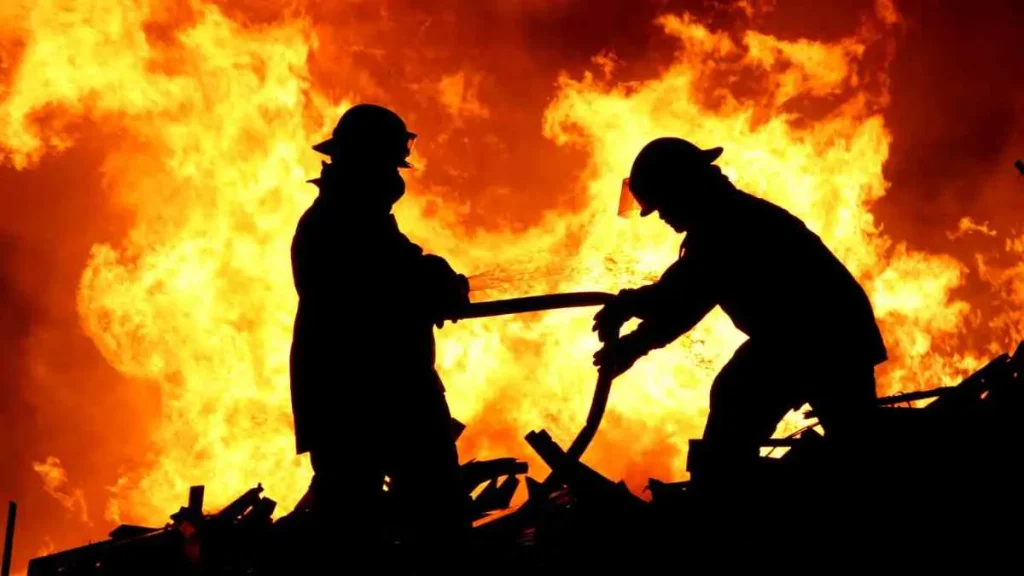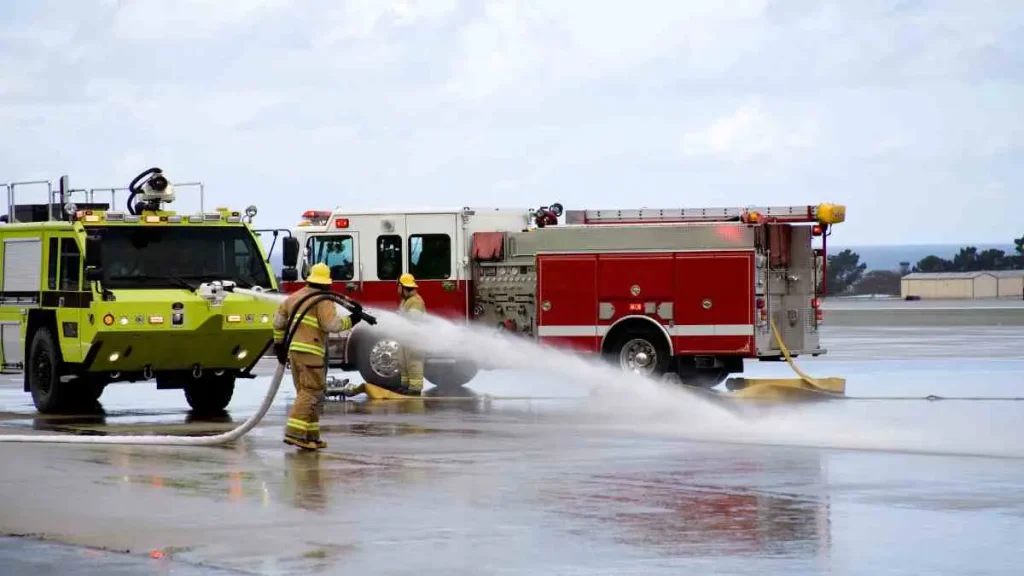House Fire in North Carolina Under Investigation, No Injuries Reported
I still remember the moment I first read about the house fire on Banks Road in Fuquay-Varina—it felt like a neighborhood shaken awake. On a Wednesday afternoon, a home owned by 43-year-old Aaron Deuel caught fire, and though Deuel has been behind bars since March, the property wasn’t empty. Neighbors describe an “encampment” of multiple people living behind the house, which added another layer of concern for anyone nearby.
Firefighters were ready for anything. Dispatch had warned them about the property’s complicated history, and crews from the Fuquay-Varina Fire Department quickly contained the flames. Thankfully, no one was injured, but the investigation is still ongoing.
This section matters because it gives you, the reader, the full picture right away—what happened, where, and why the response was so carefully managed. Understanding these basics sets the stage for diving deeper into the story, the people involved, and what it means for the neighborhood.
Who Is Aaron Deuel? Understanding the Background
When I first dug into Aaron Deuel’s history, it became clear why the Banks Road property wasn’t just any house—it had a complicated past. WRAL reports that Deuel, 43, has been in custody since March on multiple serious charges, including weapons of mass destruction, discharging a firearm to incite fear, and drug-related offenses.
Even though he wasn’t home when the fire started, the property’s history immediately made it a high-risk situation.
I found it striking that dispatch specifically warned firefighters about the house before they arrived. This wasn’t standard procedure for a typical house fire. Authorities knew the property could pose unique dangers—whether from previous criminal activity or the way the property was being used.
It’s a reminder that not every fire is simply about flames and smoke; sometimes it’s about the people, history, and potential hazards that make a situation much more complex.
Knowing this context changes the way you view the fire. It wasn’t just another local news item—it was a situation where the safety of first responders had to be considered carefully, even before anyone stepped foot on the property.
Residents and the ‘Encampment’

Even with Deuel behind bars, the house wasn’t empty. Neighbors told WRAL that multiple people were living on the property in what they described as an “encampment” behind the main house. This wasn’t some short-term gathering; it seemed like a semi-permanent setup with tents or temporary structures where several individuals were staying.
I can imagine the fire department arriving, knowing there might be people inside or nearby. That adds a human layer that most news articles often skip. These aren’t just statistics; these are real people whose safety was suddenly at risk, living in conditions that may have made the fire more dangerous or unpredictable.
For anyone following the story, this raises natural questions: Who were these residents? Were they aware of the fire? Did anyone need help evacuating? These are the human elements that turn a headline into a story that actually matters to the community.
Across the country, fires like this happen frequently—just like a Delaware home that suffered major damage after an overnight fire, incidents like these underscore the need for vigilance and preparedness.
Fire Response and Containment
The response to the fire was swift and precise. The Fuquay-Varina Fire Department led the effort, with backup from nearby units ready if needed. Because of the property’s known history, dispatch instructed firefighters to take extra precautions. When I read about that, it made me appreciate the level of training and preparation that goes into a seemingly straightforward call.
Reports suggest the fire mainly affected the roof and the rear of the house. Thankfully, no injuries were reported. But even with no casualties, the work of the crews highlights how dangerous firefighting can be, especially in properties with complex histories or multiple occupants. It’s not just about putting out the flames—it’s about assessing risks, keeping residents safe, and protecting the firefighters themselves.
Seeing this in context, I realized that local fire departments constantly balance urgency with caution. One wrong step or a misjudgment can turn a routine response into a tragedy. This makes me think about all the behind-the-scenes decisions we rarely hear about when reading news headlines.
Local fire departments have faced complex fires before; in a recent North Carolina house fire, more than a dozen firefighters responded to control the blaze, highlighting how challenging these situations can be.
Investigation Status and Authorities’ Updates

The fire is still under investigation, and authorities haven’t yet released a cause. That’s normal for a situation like this, but it often frustrates readers looking for immediate answers. Investigators are examining the property, speaking with neighbors, and reviewing any potential hazards that may have contributed to the fire.
It’s tempting to speculate when information is scarce, but sticking to verified details matters. Right now, we know the house caught fire on Wednesday afternoon, no one was injured, and the property had multiple occupants living behind it. Beyond that, it’s up to trained investigators to determine exactly what triggered the blaze.
For anyone living nearby, this ongoing investigation is a reminder to stay alert. Understanding that the authorities are being methodical, rather than rushed, can provide reassurance that the cause will eventually be identified and publicized safely.
For real-time updates and community discussions on incidents like this, many local residents share alerts and tips on WhatsApp groups focused on neighborhood safety.
Context: Recent Home Fires in Central North Carolina
The Banks Road fire isn’t an isolated event. Over the past few months, Central North Carolina has experienced several significant house fires. Some involved injuries, others destroyed historic structures, and in some cases, animals were lost.
Looking at this broader pattern shows that local fire departments have been under considerable pressure to respond to multiple emergencies, often simultaneously.
For me, putting the Banks Road fire into this larger context makes the story feel even more real. It’s not just about one house; it’s about a region where fire safety is a continuous concern, especially in areas with older homes or unusual property situations.
For local residents, it’s a nudge to review fire safety measures in their own homes, from smoke detectors to evacuation plans, because incidents like this can happen anywhere.
This isn’t the first time a home fire has shaken a community—similar to a tragic incident in Washington State where two people were killed in a house fire, these events remind us of the importance of preparedness.
Safety Tips and Takeaways for Homeowners
Reading about the Banks Road fire, I couldn’t help but think about what we can all learn from it. First, if you live in an area with older homes, multiple occupants, or unusual property layouts, it’s crucial to review your fire safety setup. Check smoke detectors, ensure easy exits, and keep fire extinguishers accessible.
Second, awareness of neighbors’ living situations can matter. In this case, the “encampment” behind the house complicated the fire response. While you don’t need to be intrusive, knowing if there are vulnerable residents nearby can be important for personal safety and community preparedness.
Finally, stay informed through trusted sources. Local fire department updates, community boards, and news outlets like WRAL provide verified information that keeps you aware without spreading rumors.
I also want to hear from you—have you ever faced a situation where a neighbor’s property or unusual living setup posed safety concerns? Sharing experiences can help us all think more proactively about fire preparedness.
If you want to read more stories about home safety and local fire incidents, check out our Home Incidents section for the latest updates and tips.
Disclaimer: The information in this article is based on reports available as of October 2025. Details may change as the investigation progresses. Readers should rely on official updates from local authorities for the most accurate information.


